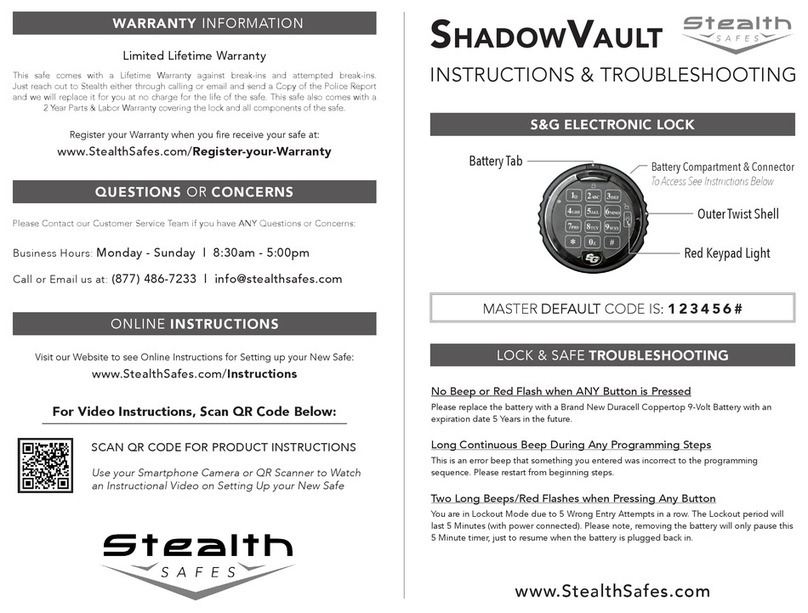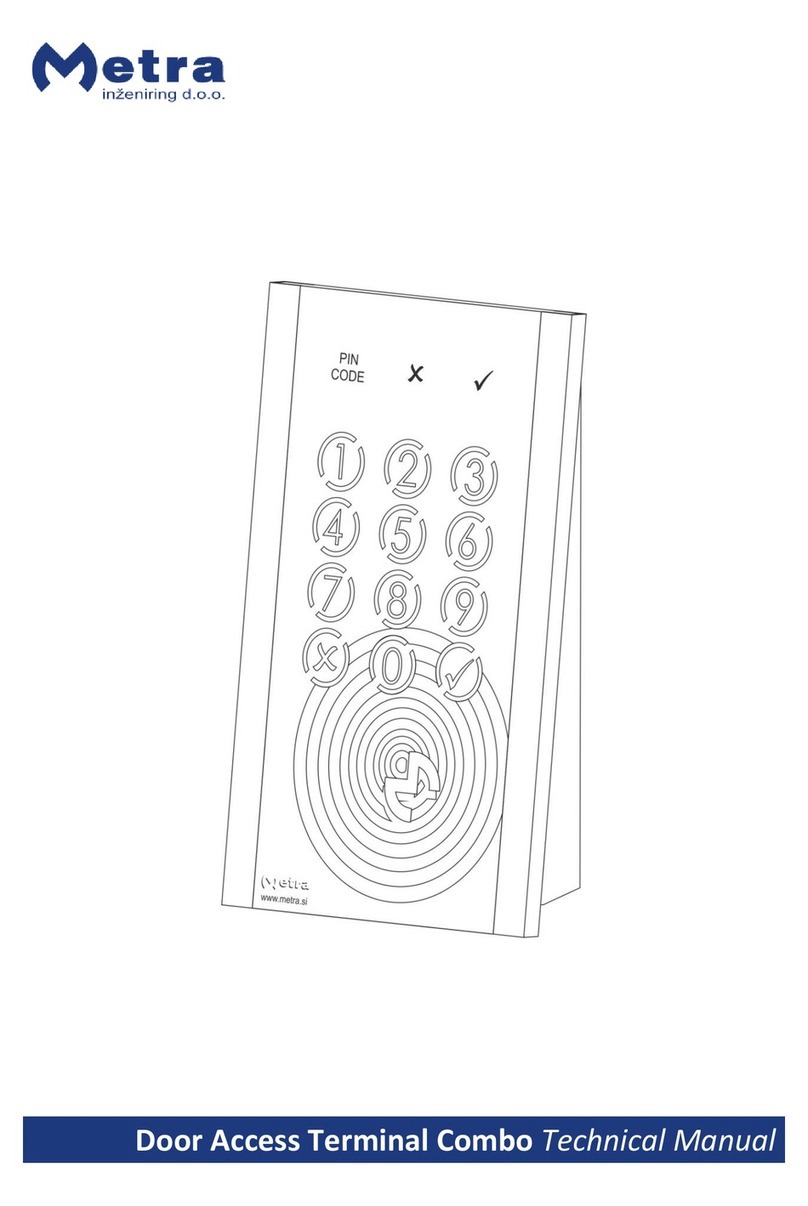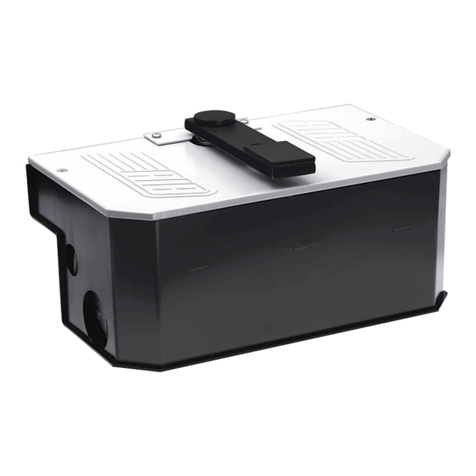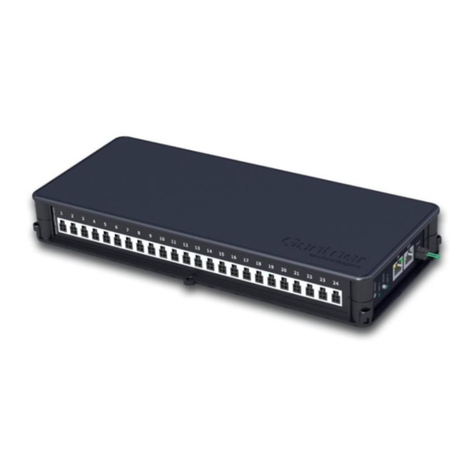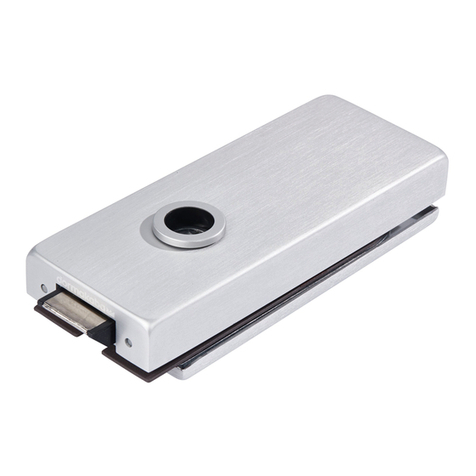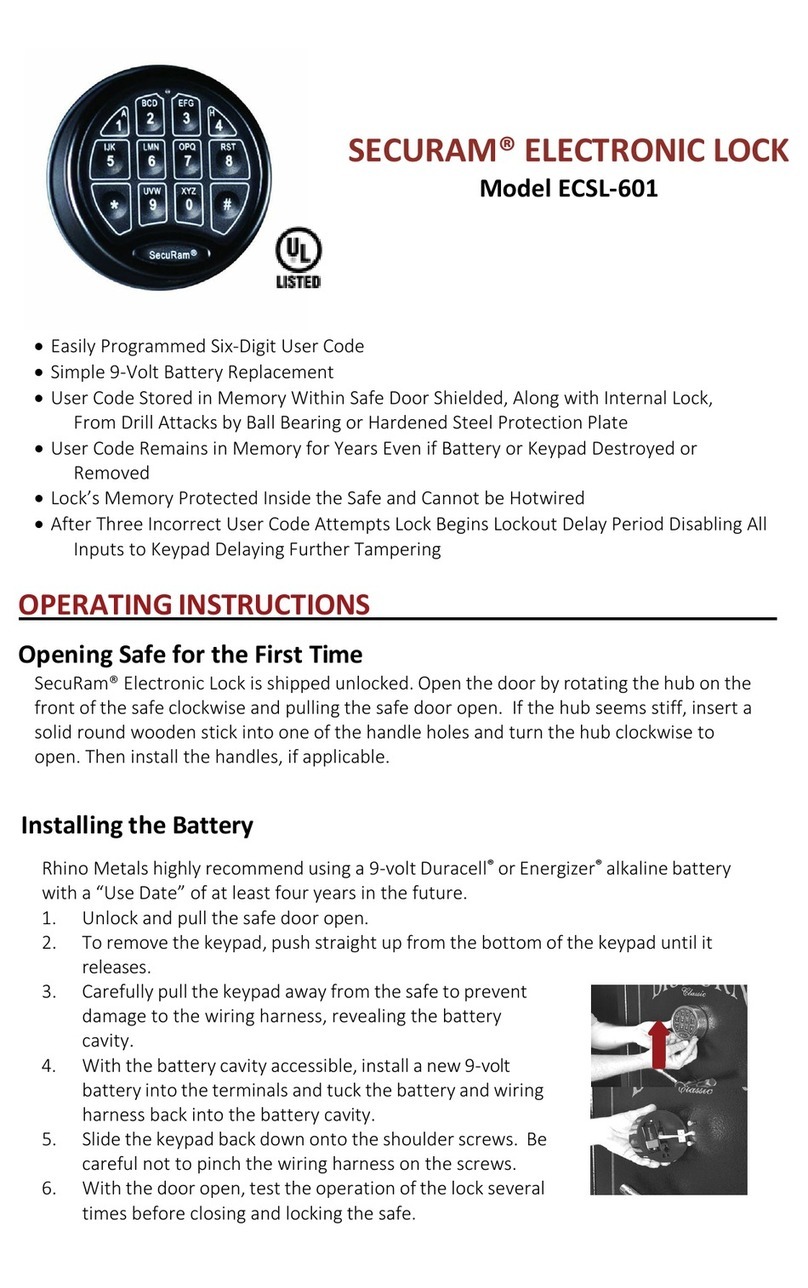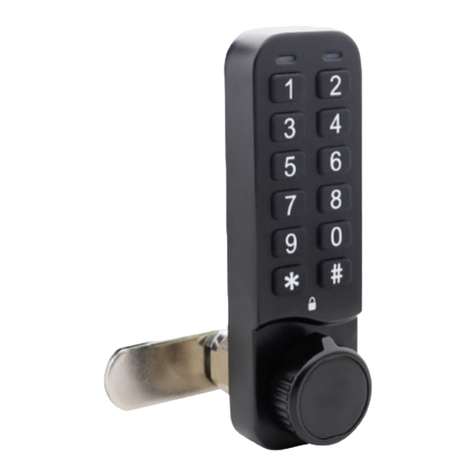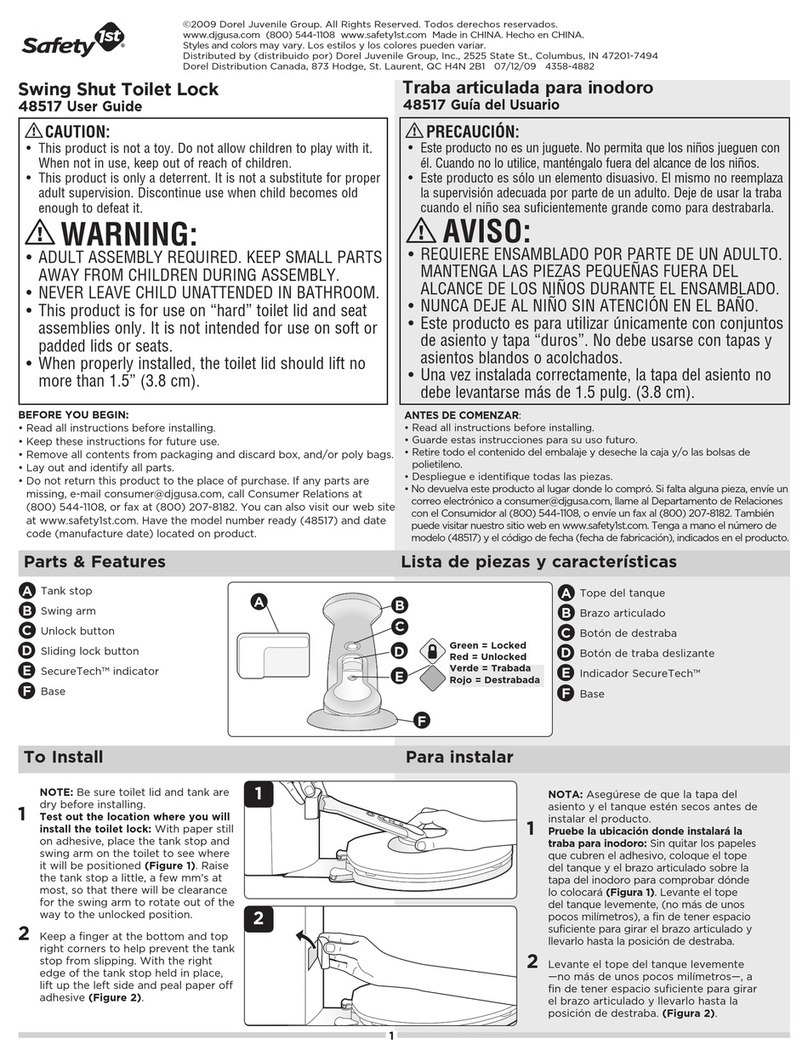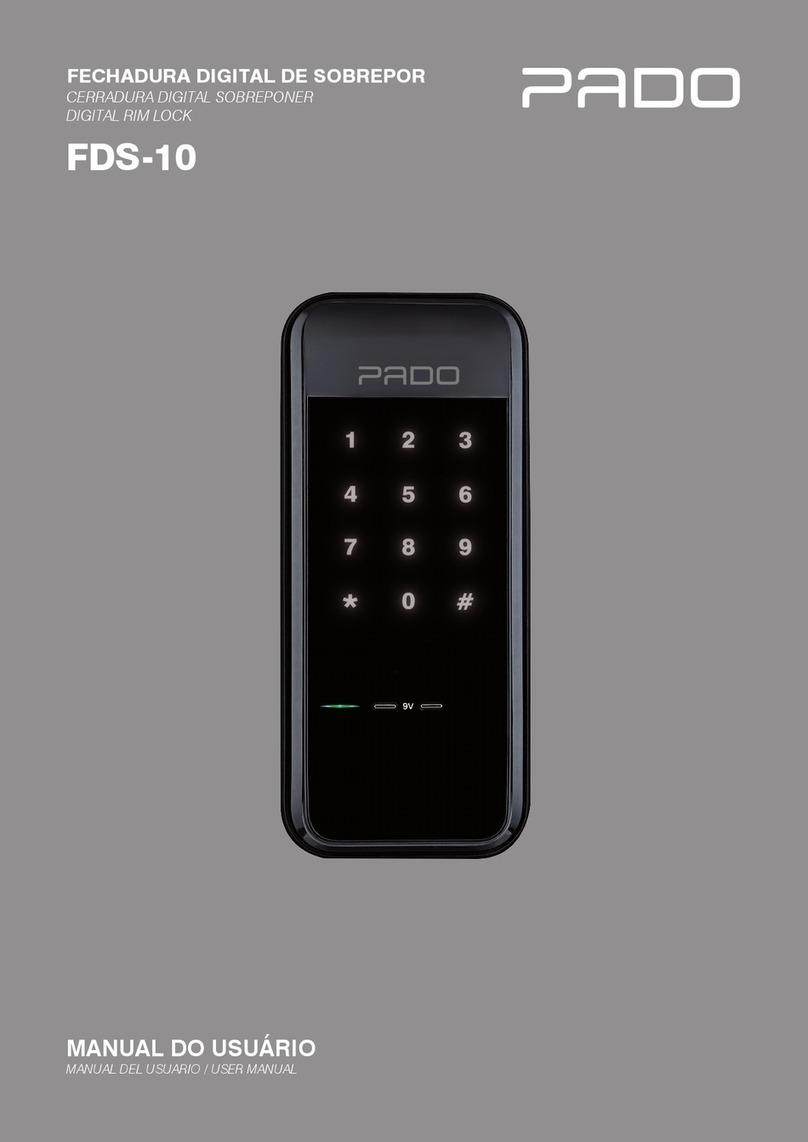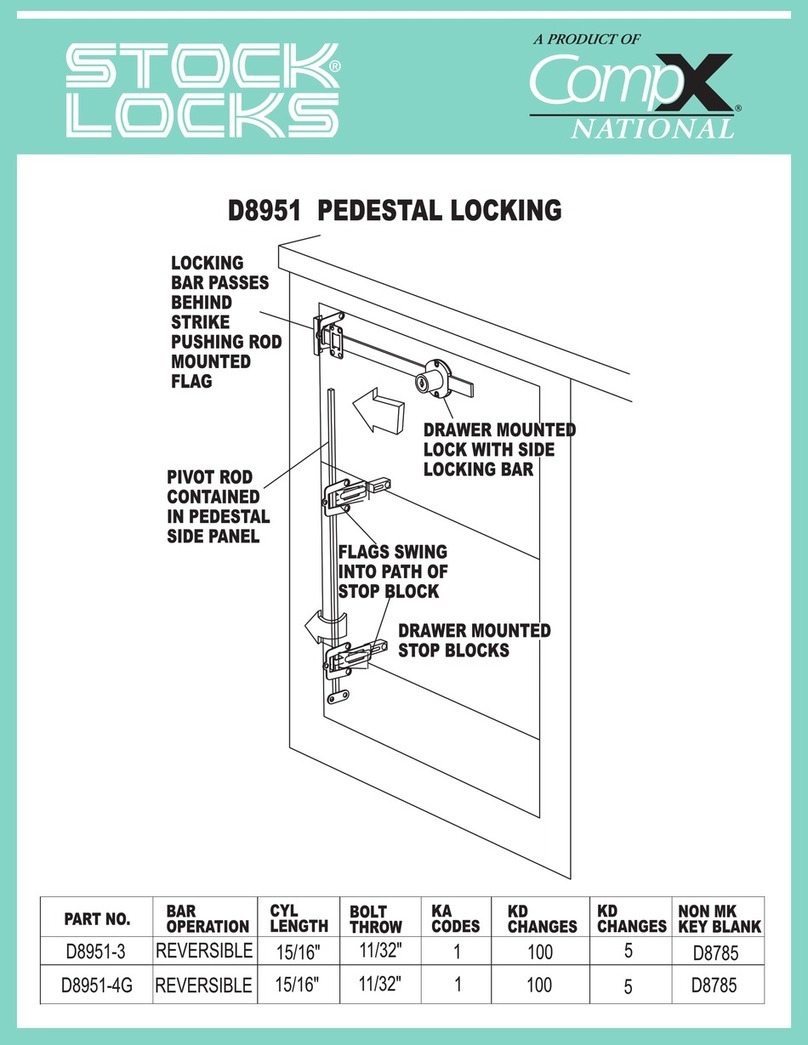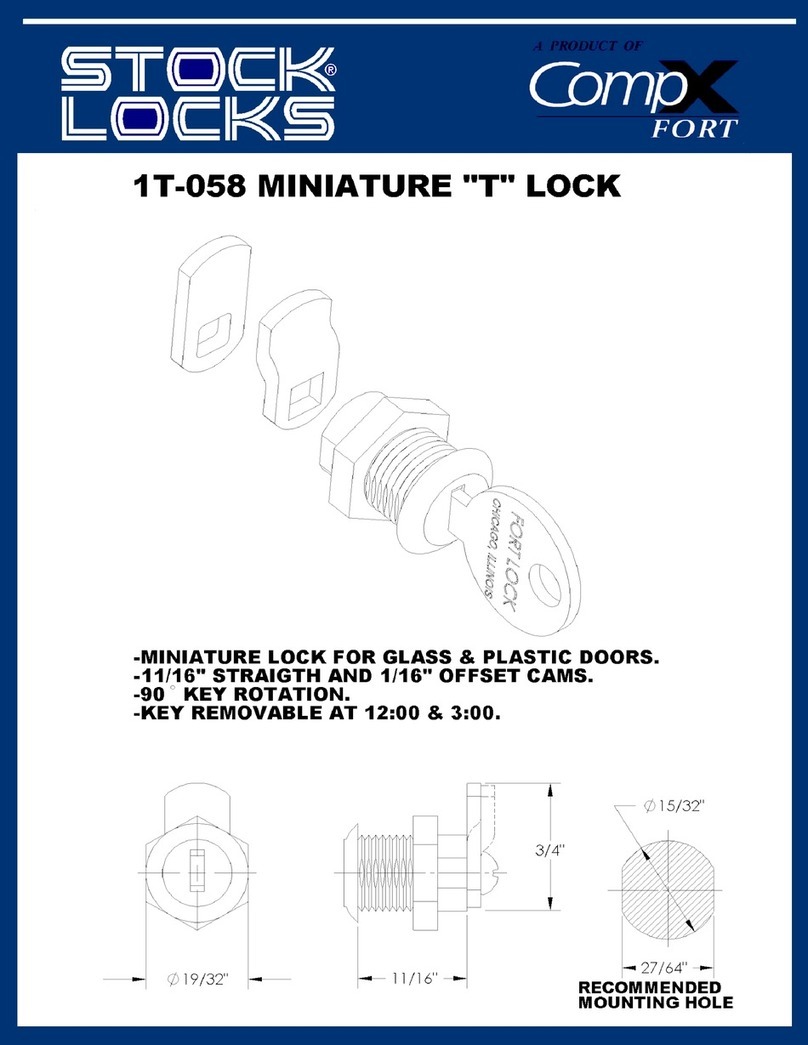
FITTING INSTRUCTIONS
LOKTRONIC ELECTROMAGNETIC LOCK
SATIN ANODISED ALUMINIUM RANGE for INDOOR USE
© Copyright LOKTRONIC March 2017
Model 1710, 550 kg Holding Force
the door, then screw the shoulder bolt into it, ensuring that the washers remain over the unthreaded shoulder of the bolt. Use
the Allen key to tighten the shoulder bolt firmly, but do not over tighten as this may prevent proper floating action. When
correctly tightened the armature should be able to contact the door face at each end when pushed firmly by hand. Check that
the anti-rotation pins do not bind in their holes. If they do, enlarge the holes slightly until they cease to bind.
2.6 Alignment and Securing
To align the electromagnet assembly, loosen the two securing screws in the end slots so that the electromagnet assembly
may be moved, close the door so that the armature mates with the electromagnet then apply power to the magnet (see Figure
12 for wiring details). Pull the door firmly against its stop and re-tighten the two securing screws firmly. Using the base plate
as a physical template drill the 2 other holes marked * on Figure 1. For a timber header drill pilot holes for the #12 wood
screws and for a metal header drill 4.2 mm holes and tap for M5 machine screws. Insert the remaining two screws, using an
internal tooth washer on each and tighten them firmly.
3 Electrical
3.1 The Electromagnet
The electromagnet is of a bifilar design, which allows it to operate on either 12 VDC or 24 VDC, +/- 10%. It is fully protected
against transients (back EMF). Do not fit additional diodes as these will reduce available voltage and therefore reduce
holding force for no benefit.
For 12 VDC: Connect Red & Yellow to +ve and Blue & Black to -ve.
Current draw 600 mA
For 24 VDC: Connect Red to +ve, Black to -ve. Join Blue & Yellow together.
Current draw 300 mA.
Figure 12 also shows the wiring of the electromagnet. Reversing the polarity will not damage the lock, however no magnetic
bond will occur.
3.2 Door Position Switch (DPS)
All 1700 Series locks are supplied as standard with a DPS. This consists of a small reed switch attached to one end of the
electromagnet, which is actuated by a driver magnet on the end of the armature. The switch will normally actuate when the
armature is approximately 10 mm from the surface of the electromagnet, (make 10mm, break 13mm). This provides an
electrical signal, which effectively indicates whether the door is open or closed. The reed switch is a SPDT type so can be
used in either a normally open (NO) or normally closed (NC) configuration. The use of this feature will depend on the specific
installation, but the DPS usually interfaces with the access control system and should be connected according to the system
requirements. Figure 13 shows the wiring schematic for the DPS unit.
Green = C White = NC Violet = NO
When installing the armature, ensure that the driver magnet on the armature is at the same end as the reed switch mounted
inside the electromagnet assembly, otherwise the DPS will not work.
The DPS is a Form-C SPDT contact and is rated at 50 mA maximum.
3.3 Magnetic Bond Sensor (MBS) End to End
Unless ordered otherwise an MBS is fitted as standard on 1710 locks. The MBS unit is mounted in the back of the
electromagnet and provides an electrical signal, which indicates whether the armature is magnetically bonded to the
electromagnet. The performance of electromagnetic locks is adversely affected by misalignment, debris between the mating
faces and low voltage, and the MBS is a means of remotely determining that the armature and electromagnet are adequately
bonded. It also provides a means of remotely detecting some forms of tampering with the lock. The MBS unit in 1700 Series
locks is an 'end-to-end' design which effectively operates over the entire surface of the electromagnet. The MBS is a SPDT
type, which allows it to be used in either a normally open (NO), or a normally closed (NC) configuration.
Blue/White = C Orange = NO Brown = NC
When the power is applied at the correct DC voltage and the armature is properly aligned and bonding, there is a closed
circuit between the Blue/White and Brown wires, and an open circuit between the Blue/White and Orange wires, as in Figure
14 (a).
If: the magnet is not energised, OR
the voltage is low, OR

